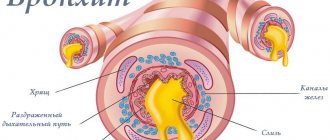The effect of the bath on the human body
There is no such person who does not understand the whole essence of the bathhouse. In fact, visiting a bathhouse is not just a process of cleansing the body of dirt and sweat, but a little more. Spending time in a hot room with high humidity and a pleasant aroma has a beneficial effect on the body. This is a real treasure for the health of body and soul.
Important! A bathhouse is only useful if you adhere to the rules for visiting it. It is necessary to maintain the water balance, as well as the temperature in the bath. If you feel unwell or dizzy, you should consult a doctor and stop the procedure.
What do we know about the physical processes in the bathhouse? After a person gets there, the body slowly but surely heats up. Heat enters through the skin and lungs and we warm up. At this time, the body turns on internal temperature regulators and releases sweating enzymes. Thanks to this, the body cools down somewhat due to the body's natural regulation.
After some time (when the body warms up to a temperature of 38 degrees and above), a critical point begins for the body. A person begins to lose water very actively and the water-salt balance is disturbed. After some time, weakness is felt throughout the body. There may be dizziness, even loss of consciousness. This condition is very dangerous and can threaten not only health, but also life in general.
Some reach the critical point in just 5 minutes, while others cannot warm up the body in 30. This is where the physiological characteristics of each individual come into play and you just have to listen to your own feelings.
Useful video
The benefits of a bath after a cesarean section include temperature training of blood vessels and improved blood circulation, including in the pelvic area.
It helps:
- accelerating uterine recovery;
- healing of sutures;
- strengthening the nervous system;
- prevent postpartum depression;
- activate immune defense;
- improve blood composition;
- cleanse the body;
- reduce the risk of extensive adhesions.
A bathhouse is harmful if recovery is incomplete and there are concomitant diseases, as the risk increases:
- softening and divergence of the seam;
- addition of infection;
- exacerbation of inflammation of any localization;
- a sharp drop or increase in blood pressure;
- bleeding, especially with fibroids.
We suggest you read: What to choose as a spacer between the beams?
Can I go to the bathhouse after surgery? Dangerous or not?
If you look at it from the medical side, we understand. The operation is basically a surgical procedure on the human skin followed by stitches. By going to the bathhouse, you expose your body to steam and high humidity. On the one hand, this is good, because you will steam the wound. But on the other hand, moisture can cause the seams to come apart. And in the bathhouse, as we know, there are quite a lot of bacteria that will get into the wound and affect your body. Even if the healing bandage has been removed from you, it is still not recommended to visit the steam room. It’s better to wait for complete healing and only then go to the sauna or bathhouse.
The second reason to abstain from the steam room is that it is stressful for the body. As a rule, operations are performed under anesthesia. Plus you will be cut with special devices and healed. It’s already hard for the body to recover, and an elevated temperature again causes stress, which the body doesn’t need at all. It is better to refrain until complete recovery if you have undergone major surgery.
Symptoms and treatment of mitral valve prolapse
For those diagnosed with mitral valve prolapse, treatment is prescribed if there are specific complaints in the form of pain, rhythm disturbances, and fainting. Prolapse is protrusion or sagging of the valve leaflets . This heart pathology is common mainly among young people. It is usually diagnosed accidentally during a physical examination or routine examination. This disorder often does not progress with warning signs.
Typically, mitral valve prolapse (MVP) is not a fatal threat to human life and does not require special treatment. However, in some patients, against the background of such an anomaly, other cardiac pathologies may subsequently develop, which must be treated.
MVP occurs in 20% of healthy people and is sometimes considered a normal variant. Women are more susceptible to prolapse than men. The pathology is mainly diagnosed in young patients 20-30 years old. Prolapse is divided into primary and secondary. Primary is called prolapse with congenital anomalies, and secondary is a pathology that arose as a complication after other diseases.
How long can you go
How long you should abstain from the bath depends on the type of surgery. The more complex the surgical intervention and the degree of skin damage, the longer you will have to refrain from going to the bathhouse.
- If you have undergone minor plastic surgery that did not affect important organs, after 1-2 months you can safely go to the bathhouse. If it was a more complex operation (on the chest, on the hips), then you will undoubtedly need to postpone going to the steam room a little and postpone it indefinitely.
- Ordinary surgical interventions will force you to give up the steam room for 1-2 months. This is appendicitis and so on.
- If the operation was related to polyps or hemorrhoids, you will have to give up the bath for a longer time. Still, hemorrhoids are a problem of blood circulation, and the bath accelerates it, which in this case is not desirable. It is recommended to abstain for at least 5 months.
- After the work on the internal organs has been completed, you will have to abstain for at least a year.
- If heart surgery has been performed, there may be a need to completely prohibit visiting the bathhouse or sauna forever. Your doctor will, of course, tell you in more detail.
As we understand from the above, the minimum recovery period for a person is at least 1 month after surgery. But remember, a bath after removing stitches is not recommended. Give your body some rest and recovery.
Attention! Only a doctor can tell you the exact time periods for how long you should not go to the bathhouse. Not everyone needs a bath after stitches are removed!
How to prepare before going to the sauna?
| Dry air bath | Raw (steam) bath | Water (Japanese) bath | |
| 1. Decrease in body temperature due to rapid evaporation of moisture; | 1. High air humidity prevents rapid evaporation of moisture, therefore, heat transfer is less effective; | 1. Normalization of body temperature due to uniform warming of the body; | 1. Due to the fact that the rays used in an infrared bath are similar to those emitted by the human body, the body overheats evenly, and heat transfer is very effective; |
| 2. No risk of overheating of the body; | 2. High thermal conductivity leads to overheating; | 2. Due to the fact that the temperature of the environment does not change sharply, there are no “jumps” in temperature, which means that there is no additional stress on the body; | 2. The body warms up evenly, so there is no risk of overheating; |
| 3. Dry air does not overload the cardiovascular system; | 3. High load on the heart due to increased body temperature; | 3. Does not have a negative effect on the cardiovascular system, does not cause pressure surges; | 3. Visiting an infrared bath after training has a beneficial effect on the functioning of the cardiovascular system, strengthens blood vessels and normalizes blood pressure; |
| 4. Restoring breathing after training. | 4. Makes it difficult to breathe due to the small amount of oxygen in the air and a large amount of steam. | 4. Does not affect the process of gas exchange in the lungs, it is easy to breathe in such a bath, and the widespread use of essential oils in a water bath helps to get rid of diseases of the respiratory system. | 4. increases the flow of oxygen to all organs. |
Before going to the sauna after training, you need to let your body recover from the load for at least a few minutes and only then enter the sauna room. Before entering the steam room, you need to stand for a few minutes under a warm shower, always without soap, otherwise you will wash off the protective layer of sebum from your skin.
Also, you should not immediately occupy the top shelf; after stress during training, the cardiovascular system may not withstand a sharp increase in temperature.
As for the use of a broom, everyone must decide for themselves. If you don’t like whipping in the bathhouse, you don’t have to use a broom, but if you are an amateur, then when you first enter the steam room, you can’t beat yourself with a broom; it’s better to start this procedure from the third or fourth session, and even then you need to do it carefully and smoothly.
If you are wondering whether it is possible to visit the sauna before training, our answer is definite - it is better to refrain from such activities. This is due to the fact that after a sauna a person has less endurance, which means he will not be able to perform the necessary set of exercises, especially when it comes to strength training.
Going to the sauna before exercise will also have an unfavorable effect on the functioning of the cardiovascular system, since high temperature and subsequent physical exercise can lead to overexertion and overload of the body. In addition, the risk of injury during training increases, since relaxed muscles do not work harmoniously. Therefore, to avoid such problems and risks, it is better not to book a sauna before visiting the gym.
In addition to improving overall well-being, the benefits of a bath include strengthening the cardiovascular system. At the same time, there is a psychosomatic effect: stress and depression are relieved. Visiting a steam room strengthens a man’s immunity and increases the body’s resistance to infections.
Most experts agree that steaming the prostate can and should be done. The exception is cases of acute inflammation and malignant neoplasm.
Inflammation of the prostate gland occurs due to the development of congestion in the pelvic area, an infectious and non-infectious catalyst. If you have prostatitis, you can go to the bathhouse, provided you follow some recommendations and there are no direct contraindications.
General urological recommendations include compliance with the following instructions:
You can steam with chronic prostatitis, but with minor restrictions. Contrast procedures: jumping into a pool with cold water, dousing is prohibited. Hypothermia can provoke an exacerbation of disorders. If you have chronic inflammation of the prostate, you can go to the bathhouse, but during periods of exacerbation you should refrain from visiting.
In the case of prostate adenoma, we are talking about tissue proliferation - a benign tumor process. Overheating of the pelvic organs affects the acceleration of hyperplasia. A balanced visit to the bathhouse and sauna leads to a decrease in the symptomatic manifestations of the disease: a decrease in the intensity of pain and normalization of urination.
You can take a steam bath with prostate adenoma only at stages 1-2 of the disease. After the adenoma reaches stage 3 of development, the patient is operated on. You can take a steam bath after removal of the prostate only after the man has fully recovered, provided that cancer has been ruled out. Limitations after surgery: bleeding and acute urinary retention.
You can go to the bathhouse after surgery to remove prostate adenoma no more than once every two weeks. If your health worsens, you should avoid visiting the steam room. As the body gets used to it, the number of visits is increased to 1-2 times a week.
You can use an infrared sauna for prostate adenoma if the malignant nature of the tumor formation is excluded.
A direct contraindication to visiting the bathhouse is the development of prostate cancer. Thermal exposure contributes to the accelerated growth of malignant tumors. Going to the bathhouse if you have prostate cancer is strictly prohibited.
Pair incompatibility remains in the following cases:
- Carrying out radiation therapy - infrared and any other heating of tissues can minimize the therapeutic effect of radiation. Visiting the bathhouse after radiation therapy of the prostate is dangerous, as it can provoke a rapid relapse of the disease.
- Surgical removal of a tumor - even after complete excision of malignant tissue, thermal exposure of the surgical site is indicated as a contraindication. Going to a bathhouse or sauna, or sunbathing in the sun after removal of prostate cancer is prohibited.
Tags: possible, operation, steam, after
« Previous entry
What happens if you go after surgery?
Not all of us listen to doctors, and it’s a shame! In fact, you really need to obey them! Now your stitches have been removed and you are full of strength. You want to relax with friends in a bathhouse or sauna. How do you think about going? Of course not! Immediately after your stitches are removed, it is better to abstain for at least 1 month. What could happen?
- The first thing that can happen is that the seams will naturally come apart. This is perhaps the most dangerous thing that can happen. As a rule, steam rooms are located outside the city and people often drink there. And what will you do if your stitches come apart? The taxi will take a long time to travel and in that time anything can really happen!
- The second is infection. There are a lot of useful things in a steam bath, but also a lot of things that are not very beneficial for the body. You can simply get some kind of disease through a wound that has not completely healed after a suture. So, after removing the stitches, it is better to stay at home for at least 1 month.
- Third. If you have had plastic surgery, the implants may sag. This is a natural process, but if you endure a certain period of time, nothing like this will happen.
Causes of prolapse
There are 2 main reasons why the heart valves may sag. The first cause of the disorder is a congenital abnormality of the heart associated with improper structure of the valve or weakening of the connective tissue of which it is composed. Due to the fact that the connective tissue is weak, the valves stretch and sag. This pathology is inherited by the child from the parents and remains for life.
Congenital MVP usually has a favorable prognosis. There are no symptoms and no treatment is needed. Doctors attribute this phenomenon to the individuality of the body. Acquired prolapse occurs due to diseases that disrupt the structure of the valves, papillary muscles or chords. Possible diseases that provoke the formation of prolapse include:
- rheumatic heart disease;
- angina;
- scarlet fever;
- cardiac ischemia;
- myocardial infarction;
- sternum injuries.
It often happens that a child is diagnosed with this pathology after suffering infectious diseases. Sore throat can cause complications that lead to inflammation of the heart muscle tissue and its weakening. Protrusion of the valves against the background of ischemic heart disease and heart attack is typical for elderly people. With injuries to the sternum, rupture of the chords may occur and, as a result, MVP may form. In such a situation, treatment is required.
Rules for visiting the bathhouse after removing stitches from surgery
For the first few visits, you should follow some simple rules.
- Don't spend too much time in the steam room. Yes, a steam room is good, but remember that you recently had your stitches removed.
- Don't drink alcohol. You already have too much stress on your body. Help him and don't drink alcohol at least.
- Take with you someone who can help you. There is no need to bring a doctor with you. An adequate sober person is enough to help you.
Don't listen to anyone on the forums. some can read them and go almost the next day. Someone can tell you that they went to the bathhouse on the 3rd day after the operation and everything was fine. Yes, this may be so, but the operations may be different and he might not even need stitches. A bathhouse is certainly good, but it’s better not to take risks!
The main thing is to approach it wisely
You need to independently think about the presence or absence of restrictions for visiting the bathhouse after undergoing surgery, or consult with a specialist, but the main thing is to approach the issue wisely.
You should not think that surgery is in itself a limitation for visiting the steam room, or that you can go to the steam room, regardless of what kind of surgery you had to undergo.
Think about your health, the balance between potential benefits and risks, and only then make your final decision. It is this approach, on the one hand, that will allow you not to limit yourself in your favorite vacation, but on the other hand, not to risk your health in vain.
Contraindications
When restoring a weakened body, it is necessary to remember that fractures may be accompanied by existing chronic diseases. In this case, the body's adaptation mechanisms are reduced. Therefore, you can visit the bathhouse, but only after consulting a doctor, so that in the acute period of inflammation, intense exposure to heat does not aggravate the situation.
You should go to the bathhouse only after the plaster has been removed.
When the osteoarticular system is inflamed, going to the bathhouse is strictly not recommended. If there is no swelling in the area of the fracture, then you can start bath procedures immediately. Otherwise, high temperatures can increase swelling, and massage will provoke hemorrhage of subcutaneous capillaries that have not yet fully recovered.
Contraindications to visiting the steam room can be any disease of the musculoskeletal system in the acute stage:
- progressive discopathy (wear of intervertebral discs);
- spondylitis (inflammatory processes of the spine);
- bone tuberculosis;
- corticosteroid therapy, which is dangerous due to complications in osteoporosis, hypertension, diabetes mellitus;
- chronic tendonitis (tendon inflammation);
- compressive radicular syndrome (intervertebral hernia).
- no need to go to the bathhouse on an empty stomach, or after a heavy meal;
- It is dangerous to enter the steam room while intoxicated;
- Do not steam immediately after intense physical activity;
- It is strictly forbidden for cancer patients to visit the bathhouse;
- Hypertensive patients and patients who have had a heart attack or stroke should be treated with caution when using bath procedures.
In any condition, even if a person believes that he is healthy, the body must not be allowed to overheat. The main amount of heat is consumed in the very first minutes of being in the steam room (the first 5–10 minutes). This time will be enough for effective healing of bones, joints, muscles and tendons.
How long after can you go to the bathhouse to avoid negative consequences? It is better to start visiting the bathhouse 1–4 weeks after the fracture, depending on the complexity of tissue fusion. Pouring hot water is also indicated if the patient has contraindications to visiting the bathhouse, but treating an injury with heat is useful (for example, when a person is prescribed to steam his leg after a fracture). You can also resort not to a wet steam room, but to the effects of the healing properties of the sauna.
A sauna is a dry bath. This method of warming up the body was invented in Finland, which is why we call a dry bath a Finnish sauna. Hot dry air has the same positive effect on the body as a Russian bath with a steam room.
A visit to the sauna has a complex effect on all parts of the body:
- relaxes muscles;
- cleanses pores;
- trains blood vessels;
- increases tone;
- improves mood;
- relieves stress.
The effects of heat are indicated for the following diseases:
- arthritis;
- arthrosis;
- osteochondrosis;
- rheumatism;
- curvature of the spine.
The thermal effect of dry steam helps:
- disperse the blood;
- warm up muscles and joints;
- improve regenerative processes throughout the body;
- reduce pain;
- alleviate the course of any disease.
Dry air is easier for the body to tolerate than humid air. If warming is necessary, but conditions such as influenza or acute respiratory infections are present, then it is recommended to start dry therapy not when the disease progresses, but a little earlier.
When visiting a sauna, like a steam room, it is advisable to observe regularity. The best option is once a week. Then this will be an excellent prevention not only for problems of the musculoskeletal system, but also for many other diseases.
Sauna or steam bath after surgery - is it possible? This question is asked to doctors by many steam room lovers, because some visit these health facilities regularly, and some even live in the village and do not have the opportunity to wash themselves any other way. Let's figure out how dangerous a sauna can be for those who have recently undergone surgery, and when you can take a steam bath again.











